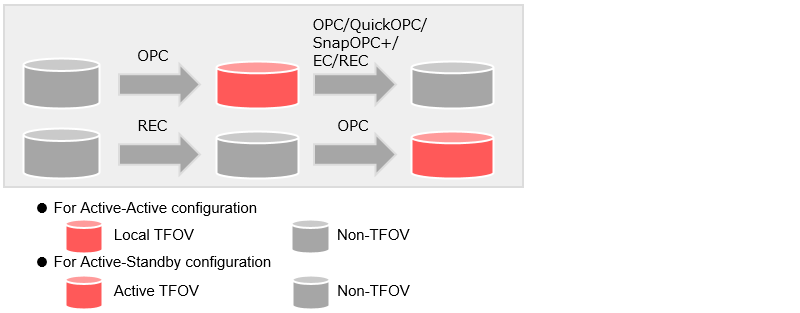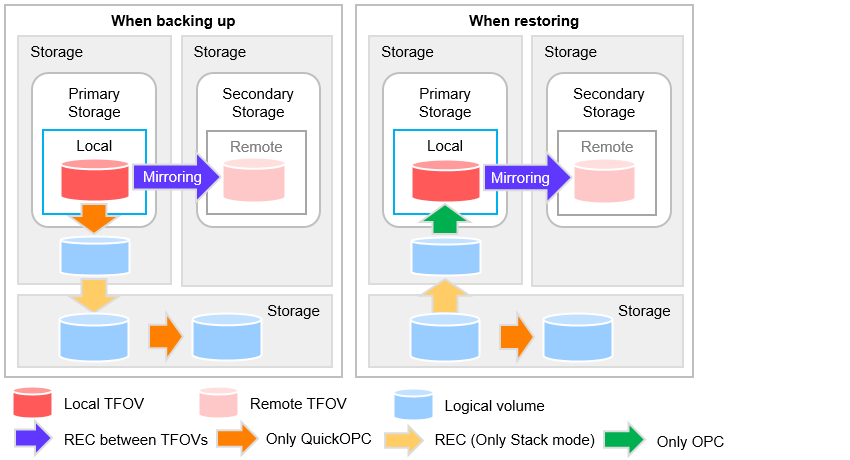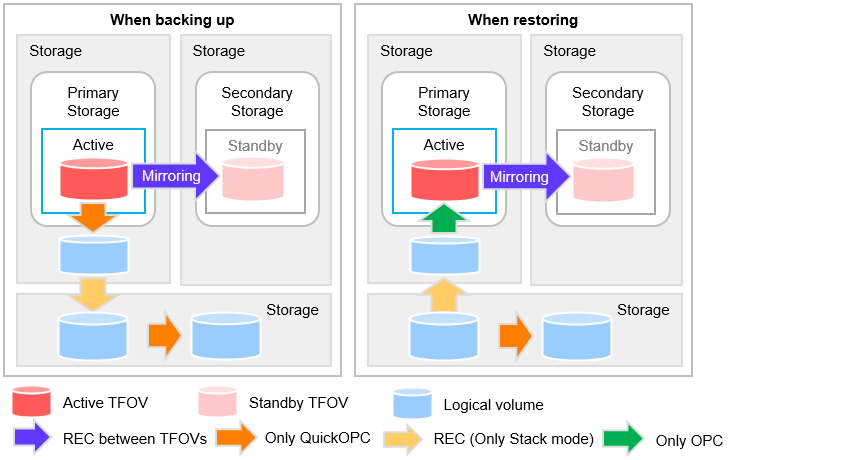This section explains cascade copying that includes a TFOV.
Cascade copy connects copy processes by setting the copy destination as the copy source of another copy. Using cascade copy, it is possible to broaden operational scenarios, such as backups that combine duplication to remote areas and sub-center side backups.
When backing up, the following combinations of cascade copy are supported.

When restoring, the following combinations of cascade copy can be executed.

An example of backup and restore using the cascade copy in the Primary Storage is shown in "Figure 3.20 Example of Backup/Restore Using Cascade Copy on Primary Storage (with Active-Active Configuration)" and "Figure 3.21 Example of Backup/Restore Using Cascade Copy on Primary Storage (with Active-Standby Configuration)". Perform the backup and restore according to the following conditions.
Use QuickOPC for intra-box copy.
Use Stack mode as the data transfer mode for RECs.
When restoring, execute OPC after stopping the intra-box copy (QuickOPC) with the TFOV as the copy source.
Cascade copy (QuickOPC) can be performed with the REC destination as the copy source.
Figure 3.20 Example of Backup/Restore Using Cascade Copy on Primary Storage (with Active-Active Configuration)

Figure 3.21 Example of Backup/Restore Using Cascade Copy on Primary Storage (with Active-Standby Configuration)

Further, cascade copy via QuickOPC and REC can be used with the Secondary Storage.
When restoring, perform a restore as follows:
For the Active-Active configuration
Execute OPC on the storage device where the TFOG Role is "Local" after stopping intra-box copy (QuickOPC) with the Primary Storage and Secondary Storage.

For the Active-Standby configuration
Execute OPC on the storage device where the TFO status is "Active" after stopping intra-box copy (QuickOPC) with the Primary Storage and Secondary Storage.
